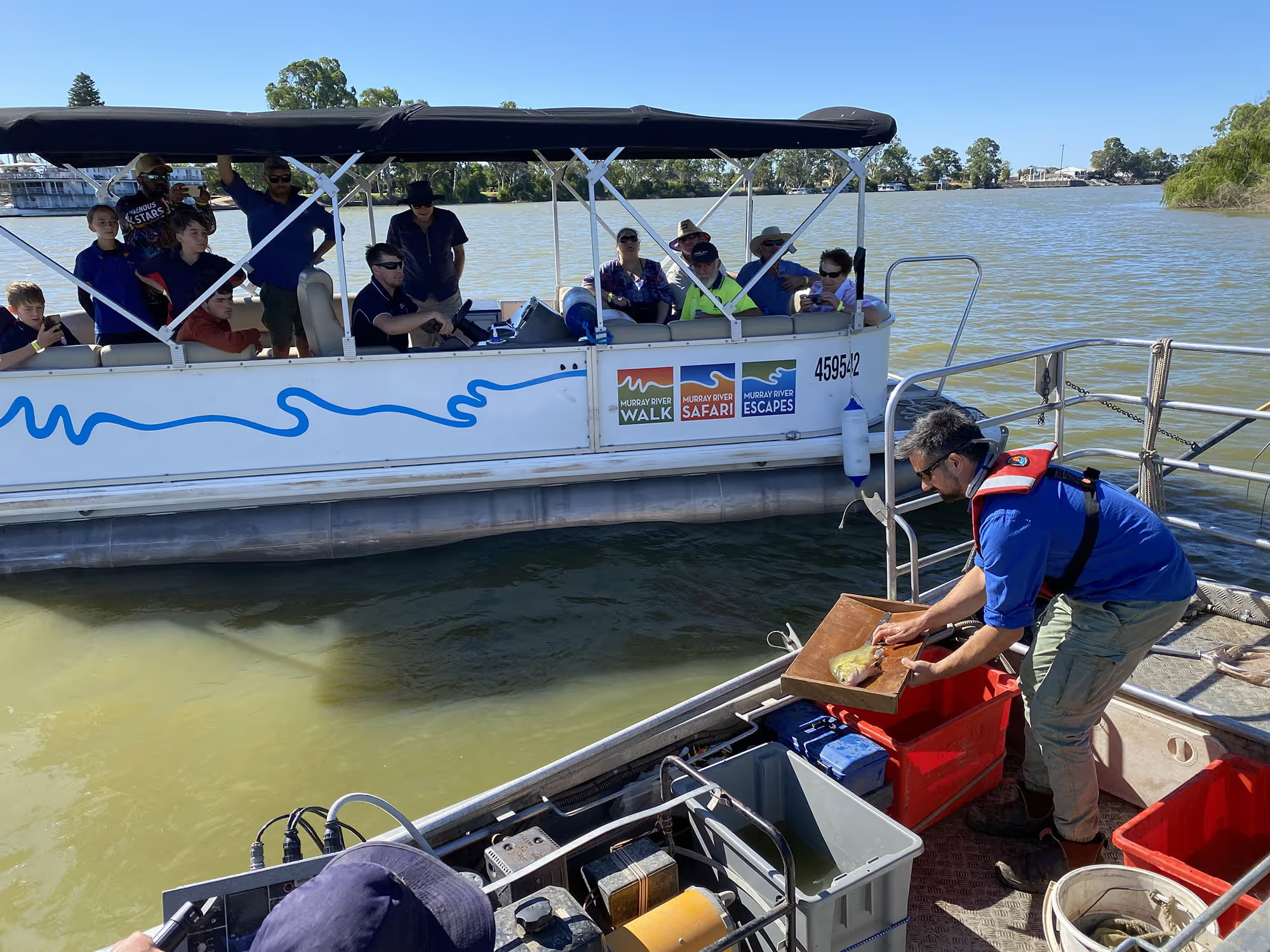Throughout the world, electrofishing is commonly used by fisheries researchers to capture freshwater fish. The technique can help in answering questions such as, what is the distribution of different fish species? How many are there? Are they reproducing, and what are the demographics of the populations? And most importantly for the Flow-MER Program, how do these characteristics change through time as a result of environmental water?
Scientists often use boat electrofishing to collect data and/or fish samples with the aim of understanding the status of fish populations (such as species composition, age distribution, and presence of invasive species) and their response to management.
This video shows electrofishing in action, one of the many techniques we use to monitor fish responses to water for the environment.
Electrofishing involves generating a field of electricity in the water which temporarily stuns fish in the close proximity (~5m) so that they can be scooped up with a dip net. The technique offers many advantages including:
- capturing fish from a wide range of sizes (20 millimetres to over 1 metre);
- being an active technique that is not reliant on fish ‘moving’ like many passive netting methods;
allowing rapid surveys; and - stunning is temporary and fish can be returned to the river unharmed.
Types of electrofishing
There are three types of electrofishing units; bank-mounted, boat-mounted and carried by an operator as a backpack. Bank-mounted and backpack units are typically used to capture fish in small wadeable streams, while boat electrofishing is used for sampling lakes and large rivers.


In general, electrofishing is most effective in fresh waters. In marine waters, electrofishing is less effective as the conductivity of water is higher than that of fish, directing the current around rather than through the fish. Nonetheless, new electrofishing units are currently under development that are effective at capturing fish in brackish estuarine environments.
Is it safe for fish?
When performed correctly, electrofishing is safe for fish and does not cause long-term harm. Fish are temporarily stunned (between seconds to a few minutes), dip netted and placed into live wells. Individuals are then processed (e.g. measured for length and weight and sometimes tagged) before being returned to the water once recovered. Tagging studies have indicated high survival rates for Golden perch and Murray cod following electrofishing, with fish displaying normal behaviours.
Is it safe for humans?
Electrofishing may conjure thoughts of danger, but it is perfectly safe when appropriate protocols are followed. These include the use of dip nets made from non-conductive materials, linesmans gloves (1000 volts), lifejackets and rubber soled shoes. Additionally, a system of pedals ensures that the electrical circuit is only completed and a field created, when all staff are ready and operating the pedals of the boat electrofishing unit.

Electrofishing in action!
The Lower Murray Selected Area team of the Flow-MER Program held a field demonstration event, so that interested members of the Riverland community could experience first-hand how electrofishing works. After a brief talk explaining this sampling technique, about 50 participants were taken to sampling sites on two pontoon boats, where they could observe from a safe distance, one of SARDI’s electrofishing boats, Henri, fishing for a few minutes. Participants and the team then converged and they could see up-close how the scooped fish were identified, measured and tagged.
Participants were surprised to see the diversity of species sampled, including some small-bodied fish they had never seen before and a large, healthy Golden perch. After the electrofishing demonstration, many people stayed for a BBQ, mingle and chat. It was a great engagement initiative, where participants could join scientists in the field to learn more about electrofishing and the fish ecology work for Flow-MER program.
If you are interested in attending future electrofishing demonstrations in the Lower Murray River in South Australia, please send an email to Luciana on Luciana.Bucater[at]sa.gov.au.






.JPG)

.webp)